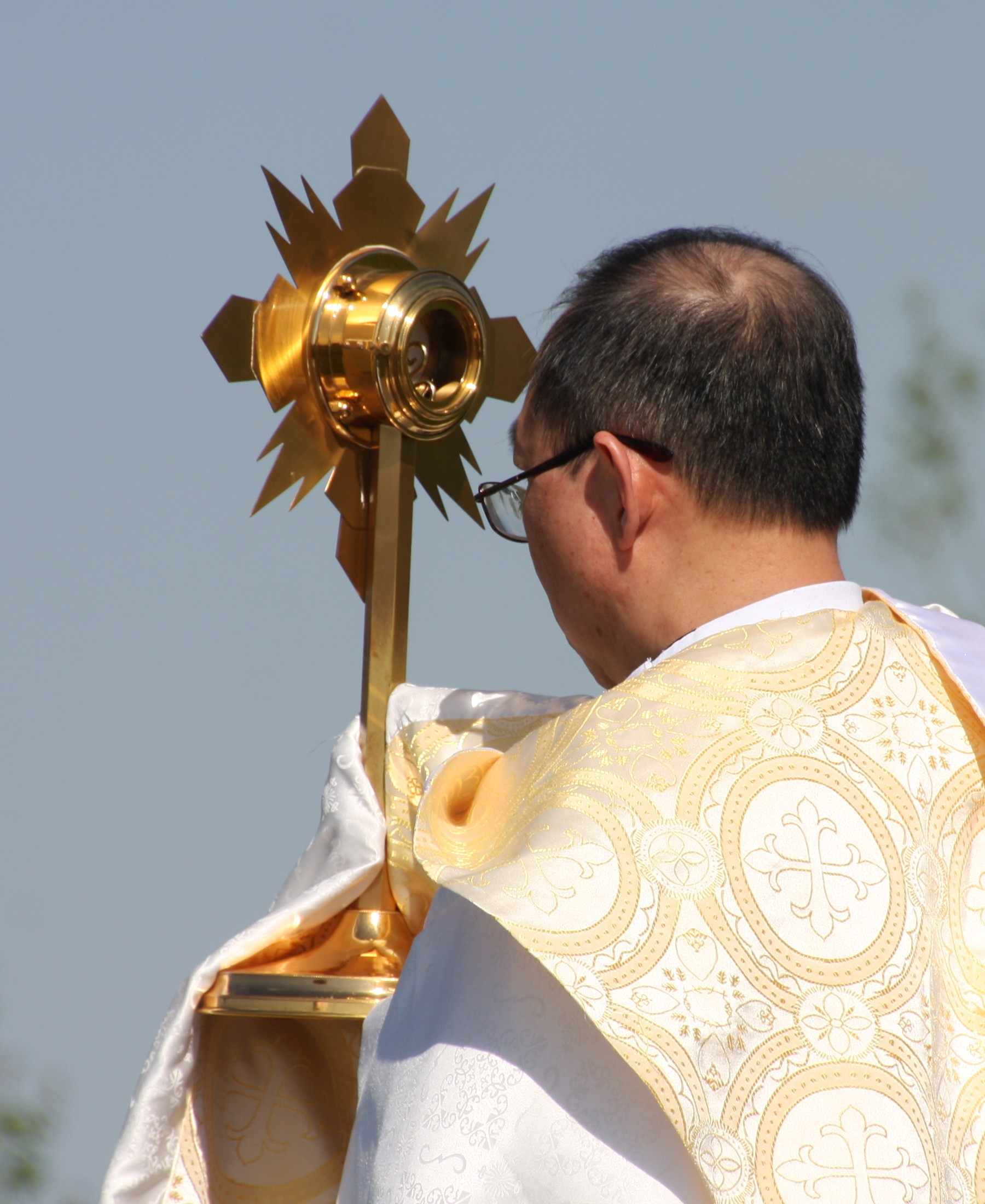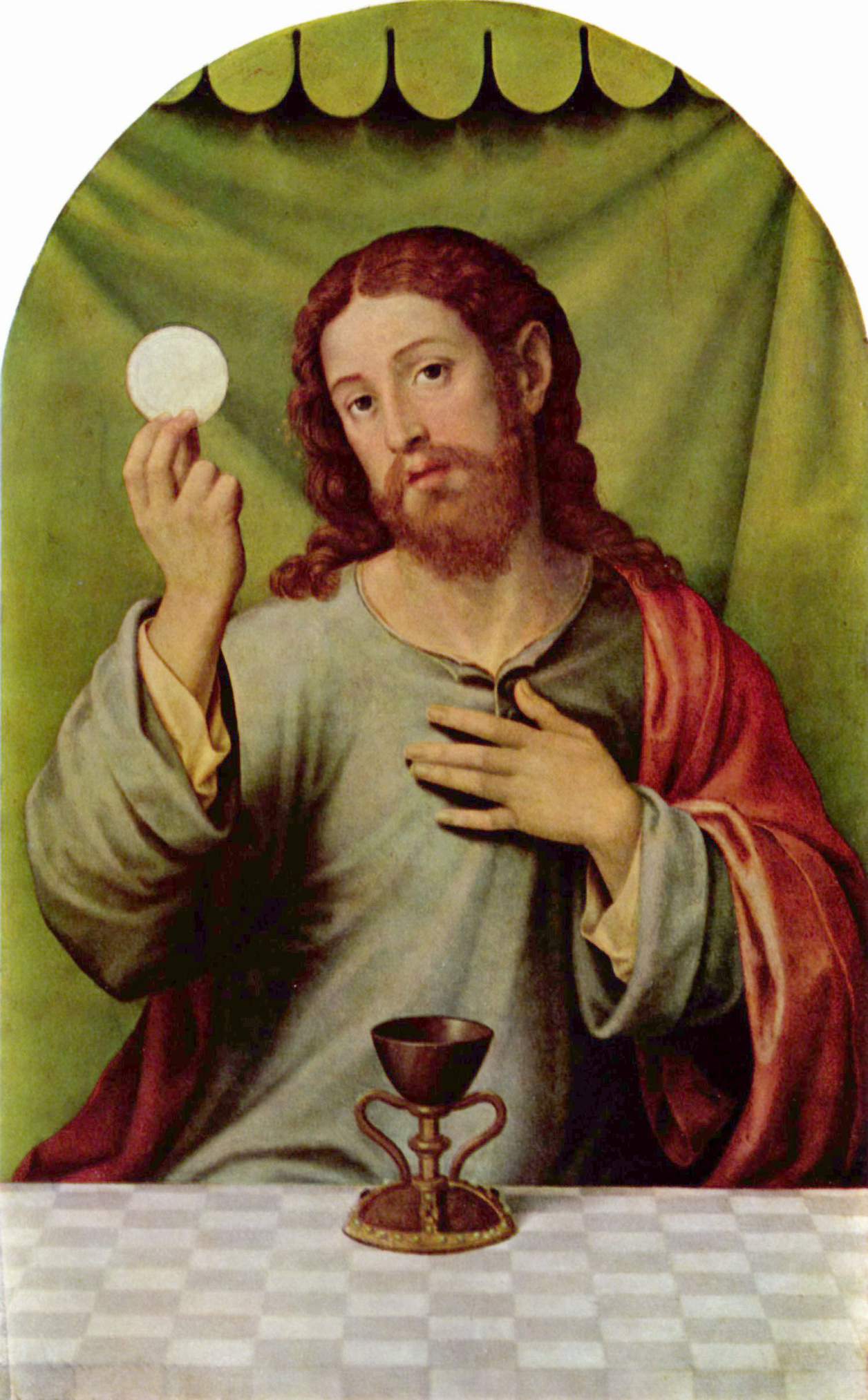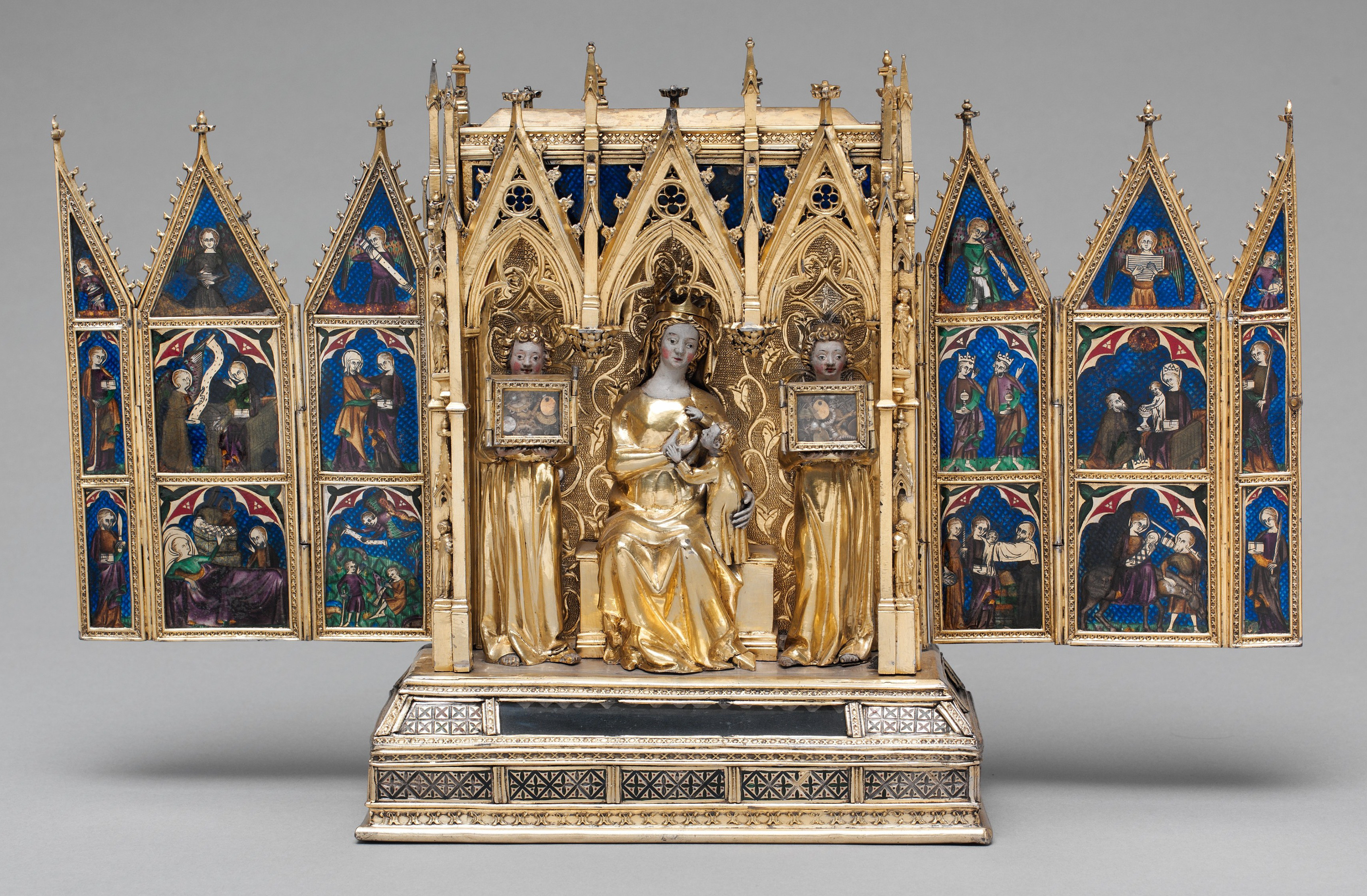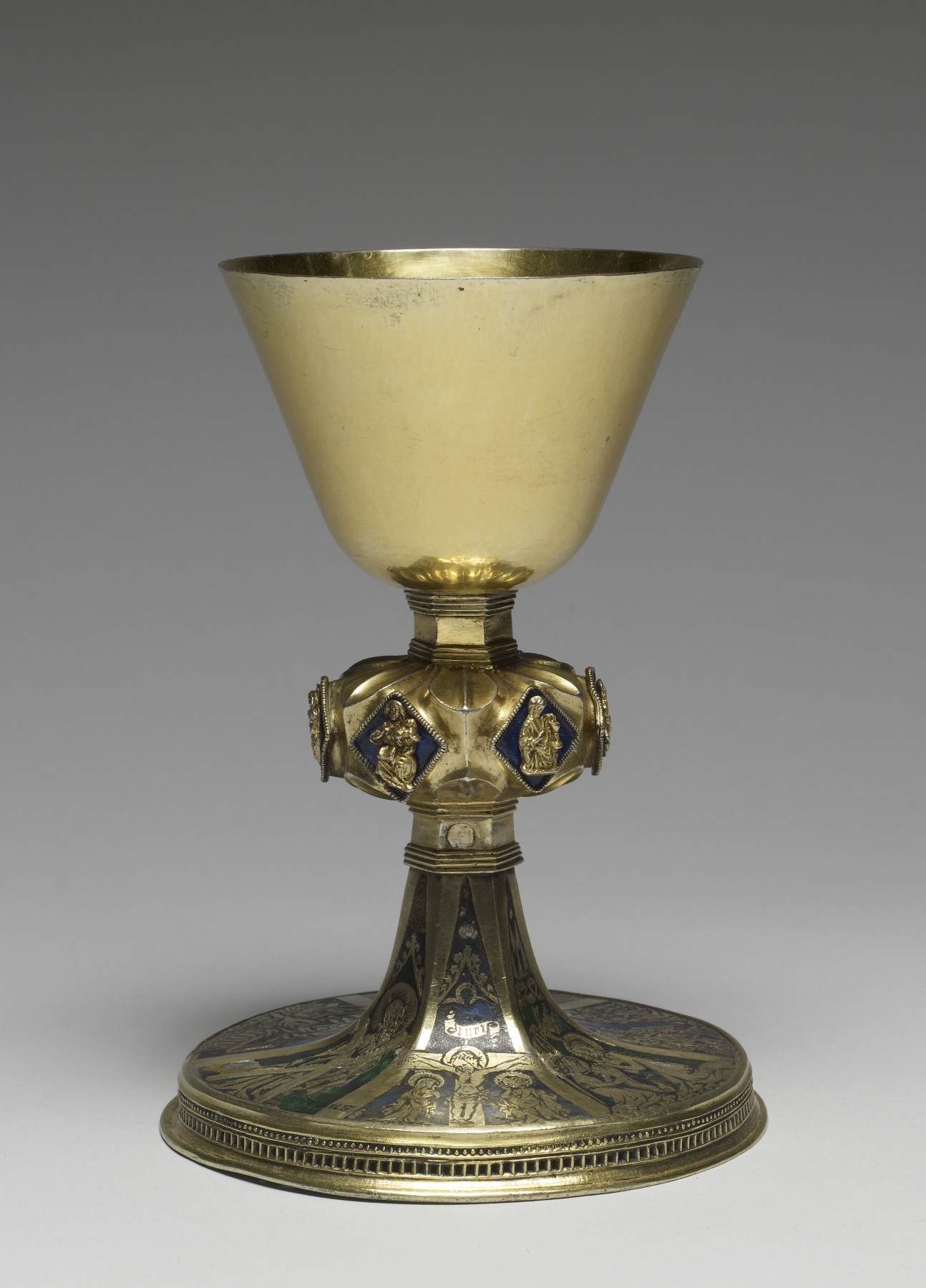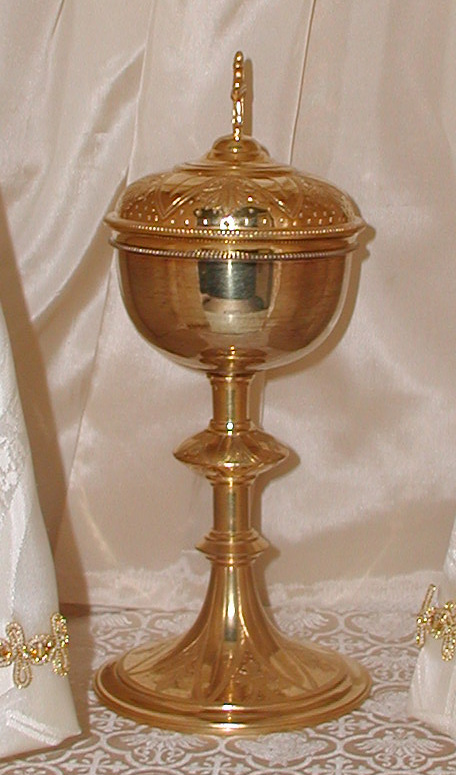|
Monstrance
A monstrance, also known as an ostensorium (or an ostensory), is a vessel used in Roman Catholic, Old Catholic, High Church Lutheran and Anglican churches for the display on an altar of some object of piety, such as the consecrated Eucharistic Sacramental bread (host) during Eucharistic adoration or during the Benediction of the Blessed Sacrament. A monstrance may also serve as a reliquary for the public display of relics of some saints."" New Advent Catholic Encyclopedia. Retrieved on 2014-11-16. The word ''monstrance'' comes from the word , while the word ''ostensorium'' comes from the Latin word . Either term, each expressing the concept of "showing", can refer to a vessel intended for the exposition of the < ... [...More Info...] [...Related Items...] OR: [Wikipedia] [Google] [Baidu] |
Benediction Of The Blessed Sacrament
Benediction of the Blessed Sacrament, also called Benediction with the Blessed Sacrament or the Rite of Eucharistic Exposition and Benediction, is a devotional ceremony, celebrated especially in the Roman Catholic Church, but also in some other Christian traditions such as Anglo-Catholicism, whereby a bishop, a priest, or a deacon blesses the congregation with the Eucharist at the end of a period of Eucharistic adoration, adoration. Exposition before the blessing The actual benediction or blessing follows exposition of the Blessed Sacrament, i.e., the placing of the consecrated Host (liturgy), Host in a monstrance set upon the altar or at least exposition of a ciborium (container), ciborium containing the Blessed Sacrament. Thus "the blessing with the Eucharist is preceded by a reasonable time for readings of the word of God, songs, prayers, and a period for silent prayer", while "exposition merely for the purpose of giving benediction is prohibited". The readings, songs and pray ... [...More Info...] [...Related Items...] OR: [Wikipedia] [Google] [Baidu] |
Eucharist
The Eucharist ( ; from , ), also called Holy Communion, the Blessed Sacrament or the Lord's Supper, is a Christianity, Christian Rite (Christianity), rite, considered a sacrament in most churches and an Ordinance (Christianity), ordinance in others. Christians believe that the rite was instituted by Jesus at the Last Supper, the night before Crucifixion of Jesus, his crucifixion, giving his Disciple (Christianity), disciples bread and wine. Passages in the New Testament state that he commanded them to "do this in memory of me" while referring to the bread as "my body" and the cup of wine as "the blood of my covenant, which is poured out for many". According to the synoptic Gospels, this was at a Passover meal. The elements of the Eucharist, sacramental bread, either Leavening agent, leavened or Unleavened bread, unleavened, and sacramental wine (non-alcoholic grape juice in some Protestantism, Protestant traditions, such as Methodism), are consecrated on an altar or a communio ... [...More Info...] [...Related Items...] OR: [Wikipedia] [Google] [Baidu] |
Blessed Sacrament
The Eucharist ( ; from , ), also called Holy Communion, the Blessed Sacrament or the Lord's Supper, is a Christian rite, considered a sacrament in most churches and an ordinance in others. Christians believe that the rite was instituted by Jesus at the Last Supper, the night before his crucifixion, giving his disciples bread and wine. Passages in the New Testament state that he commanded them to "do this in memory of me" while referring to the bread as "my body" and the cup of wine as "the blood of my covenant, which is poured out for many". According to the synoptic Gospels, this was at a Passover meal. The elements of the Eucharist, sacramental bread, either Leavening agent, leavened or Unleavened bread, unleavened, and sacramental wine (non-alcoholic grape juice in some Protestantism, Protestant traditions, such as Methodism), are consecrated on an altar or a communion table and consumed thereafter. The consecrated elements are the end product of the Anaphora (liturgy), ... [...More Info...] [...Related Items...] OR: [Wikipedia] [Google] [Baidu] |
Reliquary
A reliquary (also referred to as a ''shrine'', ''Chasse (casket), chasse'', or ''phylactery'') is a container for relics. A portable reliquary, or the room in which one is stored, may also be called a ''feretory''. Relics may be the purported or actual physical remains of saints, and may comprise bones, pieces of clothing, or some object associated with saints or with other religious figures. The authenticity of any given relic is often a matter of debate; for that reason, some churches require documentation of a relic's provenance. Relics have long been important to Buddhism, Buddhists, Christianity , Christians, Hinduism , Hindus, and to followers of many other religions. These cultures often display reliquaries in shrines, churches, or temples to which the faithful make pilgrimages to gain blessings. The term is sometimes used in a looser sense to mean a container for the remains of any important figure, even non-religious ones. In particular, the kings of France often spe ... [...More Info...] [...Related Items...] OR: [Wikipedia] [Google] [Baidu] |
Anima Christi
The "Anima Christi" (Latin for ‘Soul of Christ’) is a Catholic prayer to Jesus of medieval origin. History For many years the prayer was popularly believed to have been composed by Saint Ignatius of Loyola, as he puts it at the beginning of his ''Spiritual Exercises'' and often refers to it. In the first edition of the ''Spiritual Exercises'' Ignatius merely mentions it, evidently supposing that the reader would know it. In later editions, it was printed in full. It was by assuming that everything in the book was written by Ignatius that it came to be looked upon as his composition. On this account the prayer is sometimes referred to as the ''Aspirations of St. Ignatius Loyola''. However, the prayer actually dates to the early 14th century and was possibly written by Pope John XXII, but its authorship remains uncertain. It has been found in a number of prayer books printed during the youth of Ignatius and is in manuscripts which were written 100 years before his birth. ... [...More Info...] [...Related Items...] OR: [Wikipedia] [Google] [Baidu] |
Holy Spirit
The Holy Spirit, otherwise known as the Holy Ghost, is a concept within the Abrahamic religions. In Judaism, the Holy Spirit is understood as the divine quality or force of God manifesting in the world, particularly in acts of prophecy, creation and guidance. In Nicene Christianity, this conception expanded in meaning to represent the third person of the Trinity, co-equal and co-eternal with God the Father and God the Son. In Islam, the Holy Spirit acts as an agent of divine action or communication. In the Baha’i Faith, the Holy Spirit is seen as the intermediary between God and man and "the outpouring grace of God and the effulgent rays that emanate from His Manifestation". Comparative religion The Hebrew Bible contains the term " spirit of God" (') which by Jews is interpreted in the sense of the might of a unitary God. This interpretation is different from the Nicene Christian conception of the Holy Spirit as one person of the Trinity. The Christian concept ten ... [...More Info...] [...Related Items...] OR: [Wikipedia] [Google] [Baidu] |
Corporal (liturgy)
The corporal is an altar linen used in Christianity for the celebration of the Eucharist. Originally called ''corporax'', from Latin language, Latin ''corpus'' ("body"), it is a small square of white linen cloth; modern corporals are usually somewhat smaller than the width of the altar on which they are used, so that they can be placed flat on top of it when unfolded. During the Liturgy of the Eucharist, various altar vessels are placed on the corporal, including the Chalice (cup), chalice, the paten, and the Ciborium (container), ciborium containing the smaller Sacramental bread, hosts for the Eucharist, Communion of the laity. Origins Early descriptions of altar linens do not clearly distinguish between the corporal and other altar cloths, and the Catholic Encyclopedia speculates that in early Christianity only one linen cloth may have been used. The writes that Pope Sylvester I "decreed that the Sacrifice should not be celebrated upon a silken or dyed cloth, but only on lin ... [...More Info...] [...Related Items...] OR: [Wikipedia] [Google] [Baidu] |
Chalice (cup)
A chalice (from Latin 'cup', taken from the Ancient Greek () 'cup') is a drinking cup raised on a stem with a foot or base. Although it is a technical archaeological term, in modern parlance the word is now used almost exclusively for the cups used in Christian liturgy as part of a service of the Eucharist, such as a Catholic mass. These are normally made of metal, but neither the shape nor the material is a requirement. Most have no handles, and in recent centuries the cup at the top has usually been a simple flared shape. Historically, the same shape was used for elite secular vessels, and many individual examples have served both secular and liturgical uses over their history, for example the Lacock Cup and Royal Gold Cup, both late medieval cups. Cups owned by churches were much more likely to survive, as secular drinkware in precious metal was usually melted down when it fell out of fashion. The same general cup shape is also called a goblet (from Old French , dimi ... [...More Info...] [...Related Items...] OR: [Wikipedia] [Google] [Baidu] |
Paten
A paten or diskos is a small plate used for the celebration of the Eucharist (as in a mass). It is generally used during the liturgy itself, while the reserved sacrament are stored in the tabernacle in a ciborium. Western usage In many Western liturgical denominations, the paten is typically either a simple saucer-like plate or a low bowl. A smaller style paten will often have a depression that allows it to securely sit on top of the chalice, as shown in the illustration on the left here. Roman rite The General Instruction of the Roman Missal lays down rules for patens: Sacred vessels should be made from precious metal. If they are made from metal that rusts or from a metal less precious than gold, they should generally be gilded on the inside. However, provisions for vessels made from non-precious metals are made as well, provided they are "made from other solid materials which in the common estimation in each region are considered precious or noble." Some call the comm ... [...More Info...] [...Related Items...] OR: [Wikipedia] [Google] [Baidu] |
Magisterium
The magisterium of the Catholic Church is the church's authority or office to give authentic interpretation of the word of God, "whether in its written form or in the form of Tradition". According to the 1992 ''Catechism of the Catholic Church'', the task of interpretation is vested uniquely in the Pope and the bishops, though the concept has a complex history of development. Scripture and Tradition "make up a single sacred deposit of the Word of God, which is entrusted to the Church", and the magisterium is not independent of this, since "all that it proposes for belief as being divinely revealed is derived from this single deposit of faith." Solemn and ordinary The exercise of the Catholic Church's magisterium is sometimes, but only rarely, expressed in the solemn form of an ''ex cathedra'' papal declaration, "when, in the exercise of his office as shepherd and teacher of all Christians, in virtue of his supreme apostolic authority, he Bishop of Romedefines a doctrine con ... [...More Info...] [...Related Items...] OR: [Wikipedia] [Google] [Baidu] |
Ciborium (container)
A ciborium (plural ciboria; Medieval Latin ''ciborium'' "drinking cup", from the Ancient Greek κιβώριον ''kibōrion'', "drinking cup"OED.) is a vessel, normally in metal. It was originally a particular shape of drinking cup in ancient Greece and Rome, but the word later came to refer to a large covered cup designed to hold hosts for, and after, the Eucharist, thus the counterpart (for the bread) of the chalice (for the wine). The word is also used for a large canopy over the altar of a church, which was a common feature of Early Medieval church architecture, now relatively rare. History The ancient Greek word referred to the cup-shaped seed vessel of the Egyptian water-lily '' nelumbium speciosum'' and came to describe a drinking cup made from that seed casing, or in a similar shape. These vessels were particularly common in ancient Egypt and the Greek East. The word "ciborium" was also used in classical Latin to describe such cups, although the only example to have s ... [...More Info...] [...Related Items...] OR: [Wikipedia] [Google] [Baidu] |
